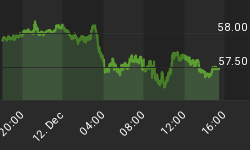In what the Wall Street Journal hails as "one of his most dramatic gestures to business," President Obama is proposing companies be allowed to write off 100% of their new investment in plant and equipment through 2011. Democrats are lukewarm to the idea as it doesn't "stimulate demand"; Republicans are shooting down the idea, too. Few seem to realize is that allowing businesses to expense their investments may be the single most effective policy tool available to promote sustainable economic growth.
Setting politics aside, let's look at the concept. For illustrative purposes, assume you have an additional $1,000 income from your small business that would be taxed at 35% unless you can offset the revenue with expenses. You would love to buy this gizmo machine that costs $1,000. Trouble is, you would be out of $1,000, yet may still need to pay Uncle Sam because your purchase is an investment, not an expense. Assume the gizmo machine is to be depreciated over 5 years:
- $1,000 gizmo machine depreciated over 5 years: $200 depreciation this year
- Taxable income: $1,000 income - $200 depreciation: $800 taxable income
- Tax liability 35% of $800: $280
Cash flow:
| $1,000 | income |
| ($1,000) | gizmo machine |
| ($280) | taxes |
| ______ | |
| ($280) | net |
You will be able to expense the investment over five years, but for the first year, you will owe Uncle Sam more than the cash you have available. While tax rules are complex and a number of items can be expensed right away, many businesses, small or large, need to depreciate investments over many years: computers 5 years; for furniture it's typically 7 years.
As a result, businesses have an incentive to spend money on services that can be expensed right away, but to postpone capital investments. Did you ever wonder why your landlord (assuming you are renting) is reluctant to upgrade the leaking roof in your house? The IRS requires a depreciation period of 27.5 years for residential improvements. Commercial improvements require a 39-year depreciation period.
The main argument for requiring long depreciation periods is that one gets many years of use out of capital investments. That may well be the case, but the profitable use would also yield tax revenue down the road. That's part of the challenge: politicians like tax revenue now to finance their own spending programs.
Politicians are looking for the "shot-in-the-arm" program to "stimulate demand". Exhausted consumers don't need more demand; they need to save more; saving in turn results from profitable investment.
Investing in plant and equipment also creates jobs as someone needs to manufacture and operate whatever it is that is built. If taxes did not discourage investment, more of that manufacturing would be done in the U.S. rather than overseas. Asia has a lower cost base to manufacture many things; but tax policies in place act as a booster to dismantle manufacturing in the U.S., to ship jobs overseas.
Some argue allowing equipment to be expensed may not lead to the purchase of a new computer, but only to upgrade and consolidate old equipment, thus not creating new jobs. It is correct that an investment incentive will take longer to work its way through the economy than a cash-for-clunkers program or other schemes.
But investment tax incentives provide for long-term sustainable growth. The problem with the proposal on the table is not the idea, but that
- It should have come a long time ago;
- It should be permanent, not a one-off idea for 2011;
- Eight weeks before the election, it appears to be mostly a campaign ploy without serious commitment.
Republicans should come up with their counter-proposal rather than shooting it down. "Investing in America" can be a campaign slogan for either party; politicians need the courage and leadership to embrace it.
In our assessment, the U.S. dollar would also benefit medium term if policies encouraged saving and investment rather than consumption at any cost.
















